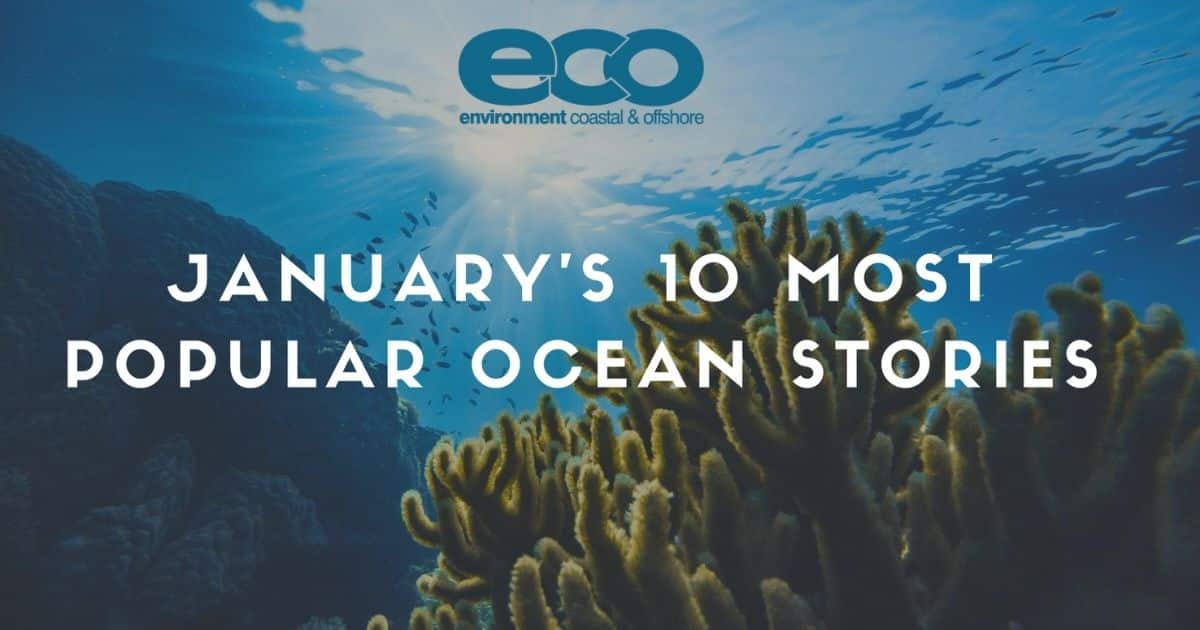In this in-depth piece by the UN Environment Programme, we learnt about a team of scientists using satellite imaging to map out, in unprecedented detail, one of the planet’s most iconic underwater ecosystems: the shallow coral reef.
New research published in the journal Science Advances, reveals the ‘ocean economy’ companies, dubbed the ‘Ocean 100’, who collectively generated $1.1 trillion in revenues in 2018. If the group were a country, it would have the world’s 16th-largest economy, roughly equivalent to the gross domestic product (GDP) of Mexico.
“Now that we know who some of the biggest beneficiaries from the ocean economy are, this can help improve transparency relating to sustainability and ocean stewardship,” said lead author John Virdin, director of the Ocean and Coastal Policy Program at Duke’s Nicholas Institute for Environmental Policy Solutions.
In the words of one Twitter follower, it turns out ‘Tremor’ was a documentary. Simon Fraser University researchers have found evidence that large ambush-predatory worms — some as long as two meters — roamed the ocean floor near Taiwan over 20 million years ago.
To mark the start of the Decade, ECO Magazine and IOC-UNESCO have partnered to produce a digital magazine to showcase upcoming activities that contribute to the Decade’s seven outcomes that characterise the ocean we want by 2030.
“After three years of intensive and inclusive preparations, we are excited to start the Ocean Decade together with partner governments, philanthropies, businesses and scientific institutions whose commitment and innovative actions will use ocean knowledge to address major challenges we face, from the decline in the ocean health to climate change. Partnerships like the one with the ECO Magazine are crucial to strengthen humanity’s relation with the ocean, reflecting its key role in maintaining a more sustainable world,” emphasized Vladimir Ryabinin, Executive Secretary of UNESCO’s IOC.
Michael W. Lodge, Secretary-General of the International Seabed Authority, sharesd his vision for a new decade filled with the promise and potential to achieve a more sustainable future for our oceans, and the critical role of data collected through deep-sea research and exploration in realizing the objectives of the UN Decade.
The Red Sea Development Company, the developer behind the world’s most ambitious regenerative tourism project, has awarded contracts to Saudi firms Red Sea International and Facilities Management Company to provide all maintenance, security, catering, administrative and laundry services at The Red Sea Project’s Construction Village on the west coast of Saudi Arabia.
The Bureau of Ocean Energy Management (BOEM) has announced the creation of the Center for Marine Acoustics, as part of their continued effort in protected species and acoustics-related research. The Center for Marine Acoustics (CMA) is an initiative that will strengthen BOEM’s role as a driving force within the regulatory community on sound in the marine environment.
“We expect that every person and organization with concerns about ocean noise will come to trust and rely on the CMA for accurate, dependable, transparent, and scientifically rigorous data and information on acoustics,” said Dr Willian Y. Brown, BOEM Chief Environmental Officer.
Eric Eikenberg, the CEO of The Everglades Foundation, released this statement in response to the Congress’ passage of the Water Resources Development Act of 2020 and an omnibus year-end spending bill.
Schmidt Ocean Institute’s research vessel Falkor collected the first public seafloor data of the New Year, as part of a global effort to map the entire ocean floor by 2030.
The expedition was a collaboration between Schmidt Ocean Institute, Seabed 2030, and Australian research institutions, and seeks to map significant seafloor features in the Tasman and Coral seas, offshore Eastern Australia. Seabed 2030 aims to facilitate the complete mapping of the global ocean floor by 2030, and will make this data freely available.
Scientists used a 600-year-old marine sponge to reconstruct a record of ocean temperature in the North Atlantic revealing past volcanic activity, as well as the current global warming trend from the release of carbon dioxide and other heat trapping gasses into Earth’s atmosphere and absorbed by the oceans.
“Atlantic Ocean temperatures fluctuate on various timescales, including multi-decadal, and this influences the weather and climate in North America, Europe, and Africa,” said the study’s senior author Peter Swart, a professor of marine geosciences at the UM Rosenstiel School. “This 600-year-long temperature reconstruction can help us understand how the climate has changed in the past so that scientists can better project how conditions may change in the future.”

